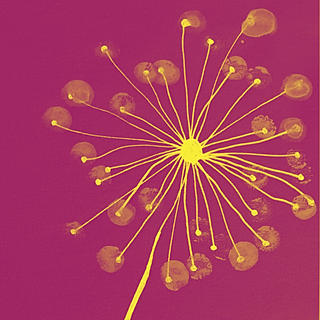Seventeen Suns
- elluminations
- May 4, 2021
- 3 min read
I came across Peter Beeson's sunrise series. Endlessly interesting and beautiful, just as each sunrise is. They were commissioned by creative challenge Cornwall to commemorate the astronomer Heinrich Schwabe: "Over a period of 17 years, from 1826 to 1843, on every clear day, the Swiss astronomer Heinrich Schwabe made detailed observations of the sun."
I love Beeson's comments under each of his sunrise posts. He shares little insights into his colour choice and muses philosophically on the scene before him. He mentioned that painting comes from a place of "that good joy energy". I read that and thought 'I'm sold!'.
I had been looking for a new creative project so I decided to create my own sun series (I'm not an early bird so mine is sunsets). Beeson wondered if it was even possible for him to capture the beauty before him. 'Of course not' he wrote, "that's made with a self illuminating light source, you're working with paint old son so just do your best with hue and tone. Which removes the pressure."
With that sage advice in mind, I present my own 'Seventeen Suns'.

I only just caught the first sunset in time before it slipped below the horizon (I soon learned to get there a good ten minutes before the official sunset time to take the hill into account). It was a good one (aren't they all!) with dramatic reds and an interesting cloudscape. I was just getting my eye in, trying to work quickly and loosely, not too concerned about the finished piece. Just recording a moment in time.
To begin with, I told myself they'd be no rules save witness the sunset and record what I saw. I told myself I could witness the sunset from any location, that it need not be on consecutive days, that I could use different media to make my art. That it would just be a fun experiment, a focus without too much thought on the outcome.
And yet, it was interesting how quickly it turned into pilgrimage. I would walk the same route each consecutive evening, ending up in the same spot.
It's been fascinating to see how far the sun has moved during the seventeen days, setting far to the right along the horizon from where it started, and of course, setting later each day.
The place I chose to view the sunset each evening has become so familiar to me. I often walked by it during the months of lockdown, but for seventeen suns I paused and spent time in the same place. The birds and animals became familiar. Rather than fleeting glimpses as I walked through the world, I was spending time in their home, their patch and seeing the same individuals night after night. And maybe I was becoming a familiar presence to them too. It became less about just the sun and more about the context and what the sun revealed and how we acted differently according to its presence or absence.

Some nights it was an effort to leave my warm house and walk out into the cool twilight, but I was always glad I went. A moment of awareness and stillness, an act of devotion at the end of the day. The sun looked different every single time, despite the fact we had a run of very similar weather.

In the end, this was much more than just an artistic experiment. Although art was the key, the way in. Art is the art of really seeing, of really experiencing. I have a quote on the home page of my website by Frederick Franck from 'The Zen of Seeing', 1973 - "I have learned that what I have not drawn, I have never really seen, and that when I start drawing an ordinary thing, I realise how extraordinary it is, sheer miracle." And I have found that something that you've taken the time to really see can't help but to become dear to you, precious.

You can see all seventeen of my sunsets here along with a diary I kept during the journey.








Comments